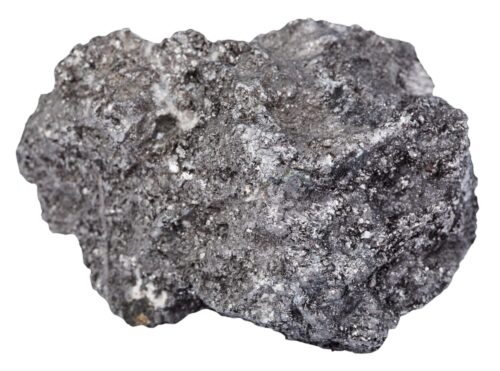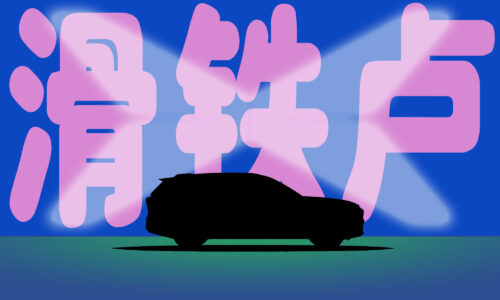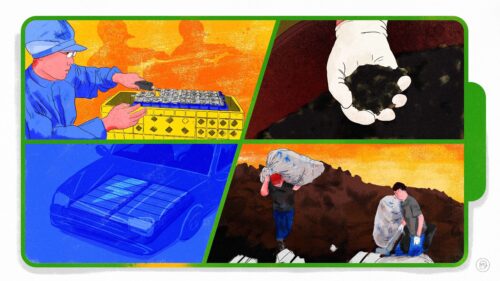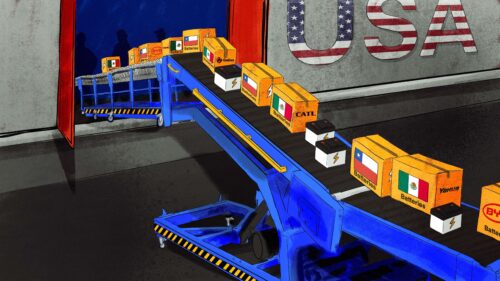Mini electric cars are big in China — will the rest of the world catch on?
China’s highest selling electric sedan in 2022 was a miniature car. They are cheap, maneuverable, practical for urban driving, and greener than full-size electric cars.
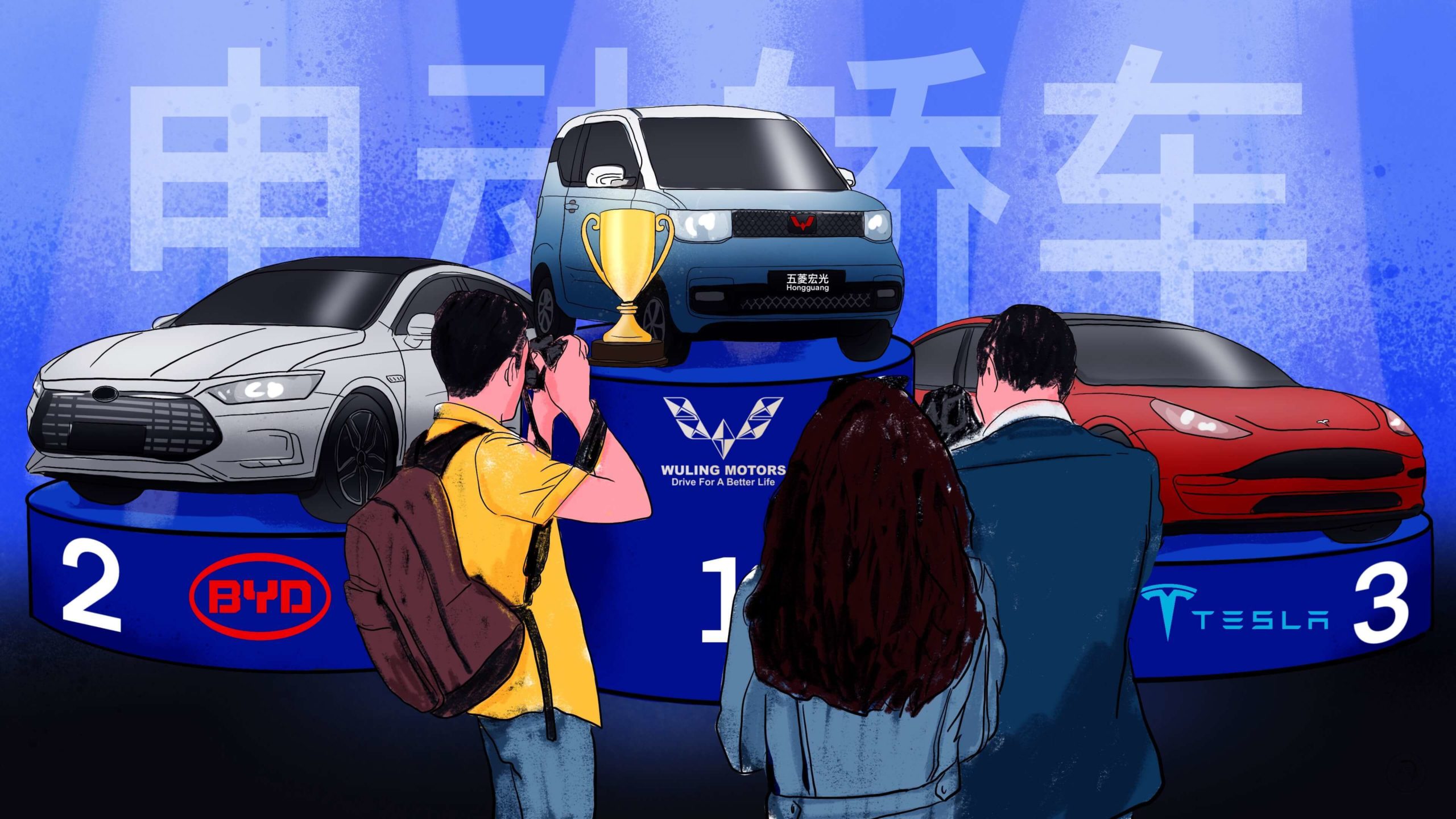
Electric cars are not powered by fossil fuels, but they still extract a heavy toll on the environment. Manufacturing EVs still causes carbon emissions and the destruction of natural habitats. As Henry Sanderson, a leading expert on the geopolitics of electric vehicles (EVs) and low carbon power told The China Project last year,
I don’t think it’s a question of moving from big SUVs to electric SUVs because that all takes bigger batteries, more materials. I think we could learn a lot from China. One of the best-selling EVs is this tiny Wuling Mini.
Mini EVs make a lot of sense for short urban commutes. They are cheap, and they do less damage to the environment than full-sized cars throughout their production process and lifespan. They are maneuverable on busy urban streets, and easy to park, but they still have many of the features of conventional cars — they are protected from the elements and are lockable, unlike electric scooters
And many of the most popular mini EVs in China can seat up to four people, making them a viable alternative for taking kids to school and other family activities.
These practical advantages of mini EVs have made them very popular in China, and fundamental to China’s shift to electric mobility.
China news, weekly.
Sign up for The China Project’s weekly newsletter, our free roundup of the most important China stories.
China’s most popular mini EV packs a punch
The highest selling electric sedan in China in both 2021 and 2022 was the car mentioned by Sanderson, the Hongguang (宏光) mini EV, manufactured by Wuling 五菱, part of the SAIC-GM-Wuling joint venture. The little juggernaut sold 404,823 units last year, and 395,451 units in 2021. The closest competitor was the full-size BYD Qin sedan which sold 341,943 units and 272,418 units those years (the highest selling EV overall in 2022 was BYD’s Song SUV, which sold 478,811 units).
The Hongguang’s top speed is 60 mph, and it has a maximum range of about 100 miles. The car is about the size of a golf cart and is certified to seat four people, although some Chinese online reviews suggest five passengers can fit — if one of them is small.
The sweetest part for consumers is the price: The Hongguang starts at 44,800 yuan ($6,563), with three other models ranging up to 99,900 yuan ($14,635). In September 2023, SAIC-GM-Wuling is planning to launch three more premium mini EVs under the Baojun (宝骏) brand, with prices ranging from 87,800 yuan ($12,862) to 102,800 yuan ($15,060).
For comparison, the Nissan Leaf — which is about three feet longer and a little wider than the Hongguan — is currently the cheapest EV in the U.S., and its entry level model has a price tag of $20,875 (after the $7,500 federal tax credit).
Lots of mini EVs, not much profit
The Hongguang launched in July 2020. It shook up China’s rapidly expanding EV market and inspired a whole range of competitors and imitators, including the Dongfeng Fengguang (风光), the Chery QQ Ice Cream (QQ冰淇淋), and the Changan Lumin. Most recently, on February 7 2023, Geely launched the Panda (熊猫).
Tellingly, from 2019 to 2021, the proportion of mini EV sales of total EV sales increased from 17.7% to 29.8%, according to China Passenger Car Association (CPCA) data. In 2022, total EV sales in China jumped to 6.49 million units, however, and the proportion of mini EVs fell back slightly to 19.3%. But that is still 1.09 million mini EVs sold in China, a year-on-year increase of 21.5%.
Despite the sales volume, the mini EV industry suffers from the same problem as China’s entire EV sector: no profits. The Hongguang accounts for around 90% of SAIC-GM-Wuling’s total sales, and the company’s gross profit margin is as low as 3% per vehicle sold. In the first half of 2022, the company reported a mere 350 million yuan ($51.27 million) in profit.
Still, that’s a profit, and it looks very healthy compared to China’s leading manufacturers of conventionally-sized EVs, most of which are losing hundreds of millions or billions of dollars every year, and often selling the cars at a loss, an approach to the business that resembles consumer internet companies.

Are mini EVs safe?
There is one question buyers may ask that could slow the global growth of the mini EV: Are they safe?
The Hongguang and its competitors do not have all the safety features of a conventional size EV. The most notable difference is that they have no airbags — which is one reason they are more affordable. They are fitted with some smart seatbelt technology like conventional cars.
A crash test carried out in 2021 actually turned out quite well for the Hongguang. In a collision with another, much cheaper mini EV at a speed of 40 mph, the other car was completely destroyed, while the Hongguang offered some protection to its passengers thanks to a crumple zone built into its chassis. But the test was done as part of a reality show type TV program, and no doubt funded by a PR budget.
There does not, however, seem to be any good research available in the public domain about the car’s safety. Internet searches in Chinese about the safety record of the Hongguan return results like:”I want to buy a mini EV, but my mom and dad say they’re not safe,” and “Aside from being cheap, everything else is bad, and there have been fatal accidents.”
On the other hand, motorcycles remain popular all over the world, and mini EVs are certainly safer.
Mini electric car vs. electric motorbike: Who would win?
In fact, if consumers are not put off by the poor safety record of motorcycles, perhaps mini EVs will not find much demand in developing countries, particularly where the weather does not get too cold. And electric bikes, scooters and motorbikes are even cheaper, greener, and more maneuverable in tight urban spaces than mini EVs.
Deborah Seligsohn is a scholar whose research includes a focus on energy and environmental politics in China and India, and who spent more than 20 years at the U.S. Department of State working on energy and environment issues in China, India, Nepal, and New Zealand, among other subjects. In an opinion piece she recently wrote for The China Project, she says, “when we talk about transportation in the U.S., we tend to mean simply automobiles, or we jump immediately to the technically more difficult question of how to electrify heavier vehicles (trucks) or to replace jet fuel.”
But that misses many other parts of the transport systems that can be electrified. One example she cites are electric two-wheelers: “This is the core of the Chinese solution to urban transportation and the part most often missed by both Chinese and foreign commentators.”
Can Chinese mini EVs go global?
If the electric bike does not win out, mini EVs seem to be a future growth market. They are environmentally friendly, and they are selling well enough in China to know that they offer a somewhat practical solution to urban transport and commuting. And they are cheap.
So, it’s easy to imagine seeing lots of Hongguang cars parked on European streets next to tiny cars from BMW, Citroën, Fiat, Mini, and other companies that have been popular for decades. In fact the Hongguang is already on sale in Europe under the brand FreZe Nikrob for €13,000 to €15,000 ($13,800 to $16,000). The company behind FreZe Nikrob is Dartz Motorz, a privately-held company that emerged from Russo-Baltic Wagon Factory, a company that was founded in Riga in 1874, and went on to make cars and planes.
The Hongguang and other mini EVs will probably also sell well across the developing world, where urbanization continues apace. The biggest cities in Nigeria, for example, will eclipse the size of their Chinese counterparts in the coming years. The Hongguang is perfect for an enormous, densely-populated city.
There is one country, however, where the Hongguang will not find any market demand, except perhaps as an amusement park entertainment: the U.S.A., where size matters: there are more than 95,000 results for a Google search for “Why do Americans hate small cars.”
Companies
Sources and additional data
- 乘联会发布 2022 年中国市场汽车销量榜 / Sina
- “除了便宜都是缺点”,曾发生致死事件,宏光MINI EV真的安全吗 / Sina
- 五菱宏光MINI几座的?五菱宏光MINI限载几人 / Modi Auto
- 五菱小车,赚不了大钱 / 36Kr
- 雷丁汽车举报风波背后:微型电动车今年九死一生 / 36Kr
- 微型电动车市场激战,宏光MINI EV又多一竞争者 / Yicai
- 神车五菱,挣扎向上 / 21财经
- 我想买五菱宏光MINIEV,但父母说那种车不安全 / Zhihu
- Trends in electric light-duty vehicles / IEA
- Wuling MINI EV Introduced In Europe As FreZe Nikrob / GM Authority
- What the world needs to know about China’s outsize role in electric car future: Q&A with Henry Sanderson / The China Project
- China is providing the world a roadmap to an electrified future / The China Project
- Watch Wuling Hong Guang MINI EV Crash Test With Other EV / Inside EVs
- Low-cost tiny electric cars like these could be the next big thing / Elektrek
- This Chinese EV Sells At Just Over $5,000. So We Tried It / Wired


